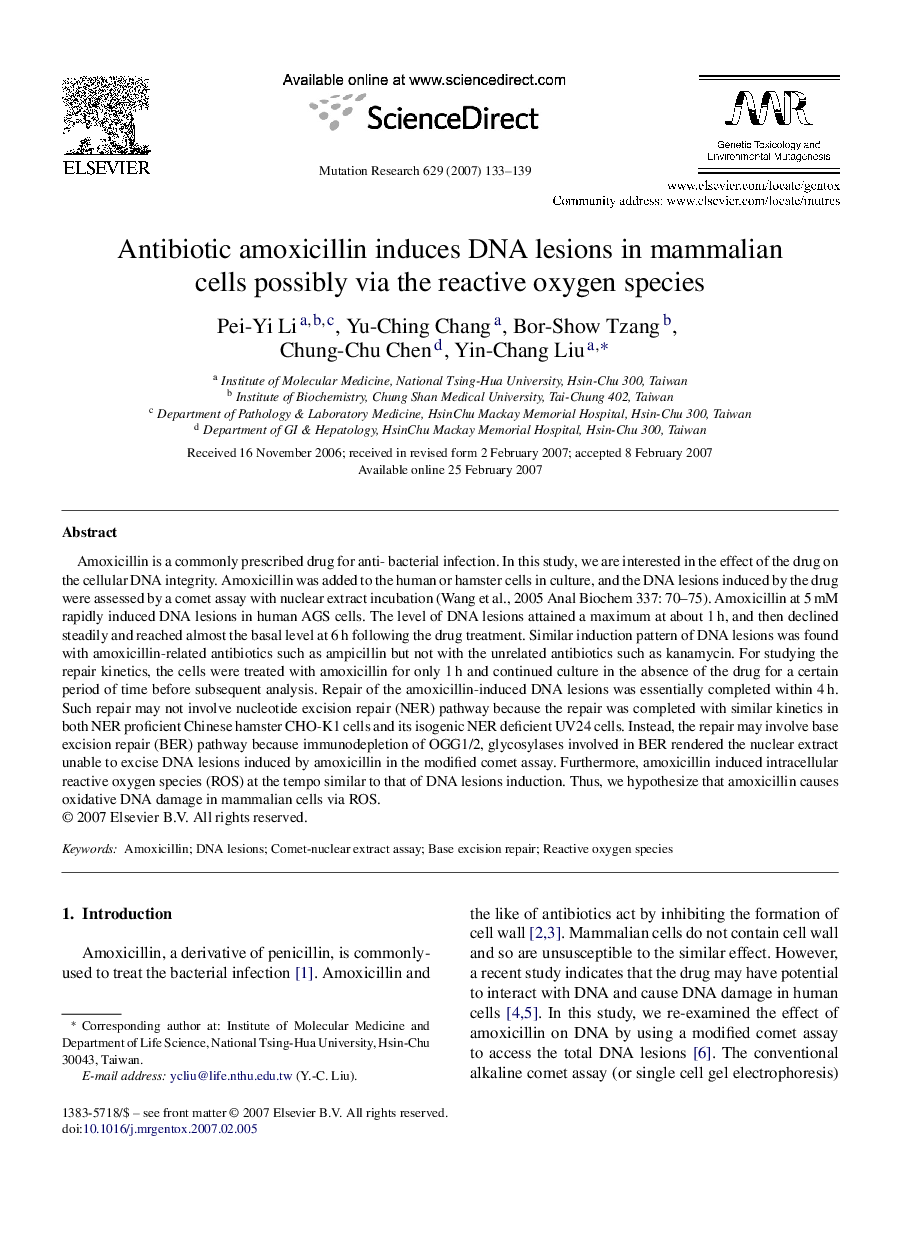| Article ID | Journal | Published Year | Pages | File Type |
|---|---|---|---|---|
| 2149203 | Mutation Research/Genetic Toxicology and Environmental Mutagenesis | 2007 | 7 Pages |
Abstract
Amoxicillin is a commonly prescribed drug for anti- bacterial infection. In this study, we are interested in the effect of the drug on the cellular DNA integrity. Amoxicillin was added to the human or hamster cells in culture, and the DNA lesions induced by the drug were assessed by a comet assay with nuclear extract incubation (Wang et al., 2005 Anal Biochem 337: 70-75). Amoxicillin at 5Â mM rapidly induced DNA lesions in human AGS cells. The level of DNA lesions attained a maximum at about 1Â h, and then declined steadily and reached almost the basal level at 6Â h following the drug treatment. Similar induction pattern of DNA lesions was found with amoxicillin-related antibiotics such as ampicillin but not with the unrelated antibiotics such as kanamycin. For studying the repair kinetics, the cells were treated with amoxicillin for only 1Â h and continued culture in the absence of the drug for a certain period of time before subsequent analysis. Repair of the amoxicillin-induced DNA lesions was essentially completed within 4Â h. Such repair may not involve nucleotide excision repair (NER) pathway because the repair was completed with similar kinetics in both NER proficient Chinese hamster CHO-K1 cells and its isogenic NER deficient UV24 cells. Instead, the repair may involve base excision repair (BER) pathway because immunodepletion of OGG1/2, glycosylases involved in BER rendered the nuclear extract unable to excise DNA lesions induced by amoxicillin in the modified comet assay. Furthermore, amoxicillin induced intracellular reactive oxygen species (ROS) at the tempo similar to that of DNA lesions induction. Thus, we hypothesize that amoxicillin causes oxidative DNA damage in mammalian cells via ROS.
Related Topics
Life Sciences
Biochemistry, Genetics and Molecular Biology
Cancer Research
Authors
Pei-Yi Li, Yu-Ching Chang, Bor-Show Tzang, Chung-Chu Chen, Yin-Chang Liu,
